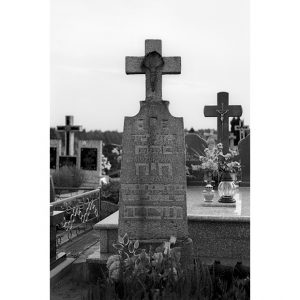Within our increasingly futurist orientation, there often seems to be little room for the past. But if this week’s events are any indication, yesteryear casts a very long shadow on contemporary life. Between the flap regarding the Anne Frank House in Amsterdam and the opening of the Museum of the History of Polish Jews in Warsaw, you’d be hard put to avoid history’s long reach.

Several days later, the debut of the Museum of the History of Polish Jews made front page news. In the works for several years now, the museum not only chronicles the Polish Jewish experience but also seeks a form of closure. “You can’t put the pieces back together again, but you can build bridges,” explained Barbara Kirshenblatt-Gimblett, who’s responsible for the core exhibition.
Another arena in which the past intrudes on the present is most painfully and soberly apparent in the stunning photography of Łukasz Baksik, which was featured in this week’s Tablet.
For several years, the Polish photographer traveled throughout Poland with an eye towards finding and photographing Jewish tombstones (matzevot) that had been incorporated into the landscape as building blocks and cobblestones. His work gives a new, and entirely sinister, meaning to the practice of recycling.
In one photograph, a tombstone, turned on its side, is “repurposed” as the cornerstone of a storehouse of farm equipment. In another, fragments of tombstones are patched together, helter-skelter, as the exterior wall of a cowshed. In a third photograph, a Hebrew name or phrase peeks out amid the smooth cobblestones of a neat and tidy town square.
Baksik’s work packs quite a wallop. It unsettles. At first glance, you’re not quite sure what you’re meant to see: An urban street scene, perhaps? A pastoral setting? In the absence of people, these images don’t give you too many helpful hints. But the longer you look at them, the more details accrue, until you realize that what you’re seeing are pieces of the Jewish past. Quite literally.
It’s the fragmentary, elusive nature of things that makes Baksik’s photography so compelling. A visual metaphor for history’s relationship to the present, it reveals an unvarnished reality in which the past makes itself felt in bits and pieces.


